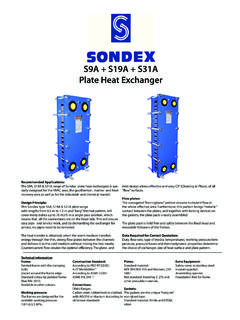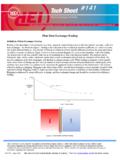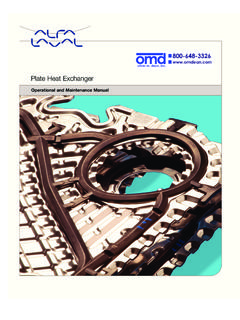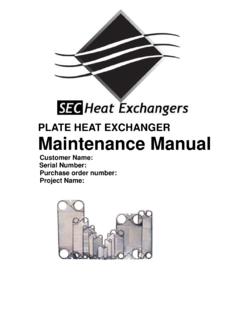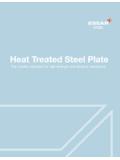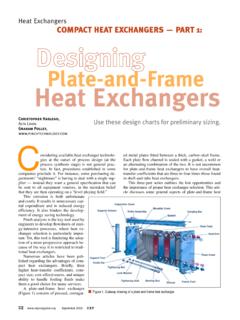Transcription of Plate Heat Exchangers - An Alternative to Shell & tube
1 The other main advantage of the Plate heat exchanger is its flexibility. By varying the number of plates, their type and the number of flow paths, a Plate heat exchanger can be tailor made for each particular application in terms of power, rating, operating temperature and pressure drop. With regards to maintenance the Plate heat exchanger does not require large maintenance areas (no tube withdrawal required) and no heavy lifting gear is required as the unit in comparison is low weight. Key Features Compact Design, saving on plantroom space requirements. Ease of maintenance. Reduced risk of legionella. Flexibility. Exchanger outputs can be increased by adding additional plates. Modern Fault alarm systems.
2 No requirement for ongoing pressure vessel inspection Care must be taken to ensure that heat exchanger is suitable for the pressure and medium to be used (some plates designed specifically for steam) Limitations of pressure (not yet available for HPHW) Jonathan Morton Boulting Environmental Services 0161 655 3344 DBP00066 Plate heat Exchangers - An Alternative to Shell and Tube As an Alternative to the conventional method of heat transfer, the Plate heat exchanger has many advantages over Shell and tube Exchangers . Plate heat Exchangers utilize corrugated plates stacked between a fixed and a movable pressure Plate . The corrugation patterns alternate for maximum operating pressures. As virtually all of the material is used for heat transfer, Plate heat Exchangers can have large amounts of effective heat transfer surface in a small footprint.
3 It is not uncommon that a Plate heat Exchanger will have the same thermal capacity as a Shell & Tube five times larger. Their compact size and high efficiency makes them ideal for installations where space is limited. In comparison to a Shell and tube Exchangers , Plate heat Exchangers are almost 90% smaller in size than the equivalent Shell and tube unit. Chemical cleaning can take place with the unit installed and as the storage volume is low, chemical usage is kept to a minimum. As the volume of water stored is low this can also mean that a Plate heat exchanger is exempt from the Pressure Equipment Directive (PED).

